Ever felt like you're drowning in product listings on Amazon? Trust me, I get it! Managing multiple products across different categories can feel like juggling while riding a unicycle. But here's the game-changer you might be missing: the Amazon Category Listing Report, aka flat file. Let me show you why this hidden gem is about to become your new best friend!
What's This Category Listing Report Thing, Anyway?
Think of it as your product catalog's DNA test results! It's basically a report with all the information that Amazon has in the backend - from your SKUs and ASINs to pricing and category info, title, bullet points and any attribute you can think of. If you're juggling multiple products, this report will help you keep everything organized and running smoothly.
Why You'll Love Getting Cozy with These Reports
Here's what you can do with it:
- Make bulk updates (bye-bye, endless clicking!)
- Keep Amazon happy by staying category-compliant
- Spot trends and opportunities like a pro
- Save hours of precious time (hello, work-life balance!)
The Real Deal: Impact on Your Business
You know what's not fun? Spending your Sunday night manually updating 500 product prices because your competitor just had a price drop. Been there, done that! But with Category Listing Reports, you can knock this out in minutes. Imagine what you could do with all that extra time - maybe finally take that weekend off?
A Step-by-Step Guide to Accessing and Managing Your Amazon Category Listing Report
Now that you understand why Category Listing Reports are crucial for your Amazon business, let's walk through exactly how you can access, download, and efficiently manage these reports. Whether you're a new seller or looking to streamline your existing processes, this guide will help you master the technical aspects of working with Category Listing Reports.
How to Access Your Category Listing Report
Your first step is accessing the report through Seller Central. Here's how you can do it:
1. Navigate to Your Reports Start by logging into your Seller Central account and go to the Analytics section. From there, look for Inventory Reports in the menu. This is where you'll find various report options for managing your catalog.
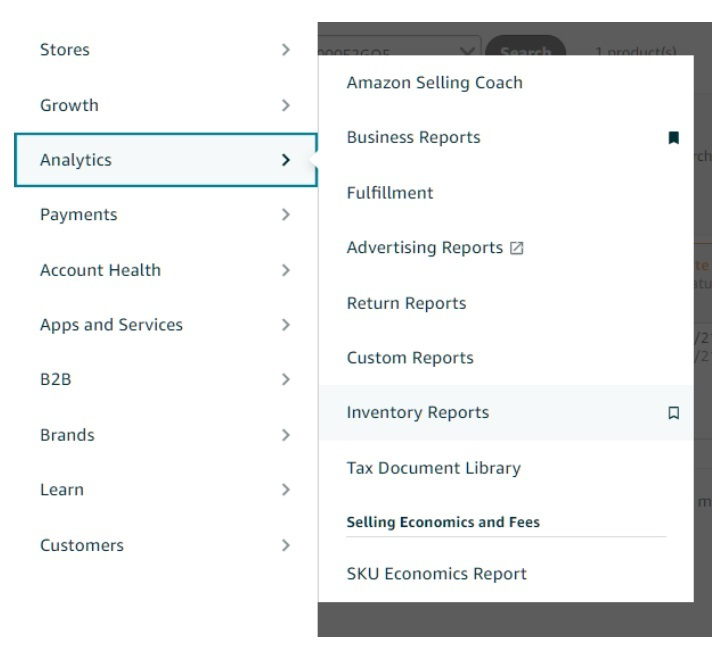

2. Request Your Report In the dropdown menu, locate and select "Category Listings Report." Once selected, click the yellow "Request Report" button to initiate the download process. Amazon will then begin generating your report, which typically takes a few minutes to complete.
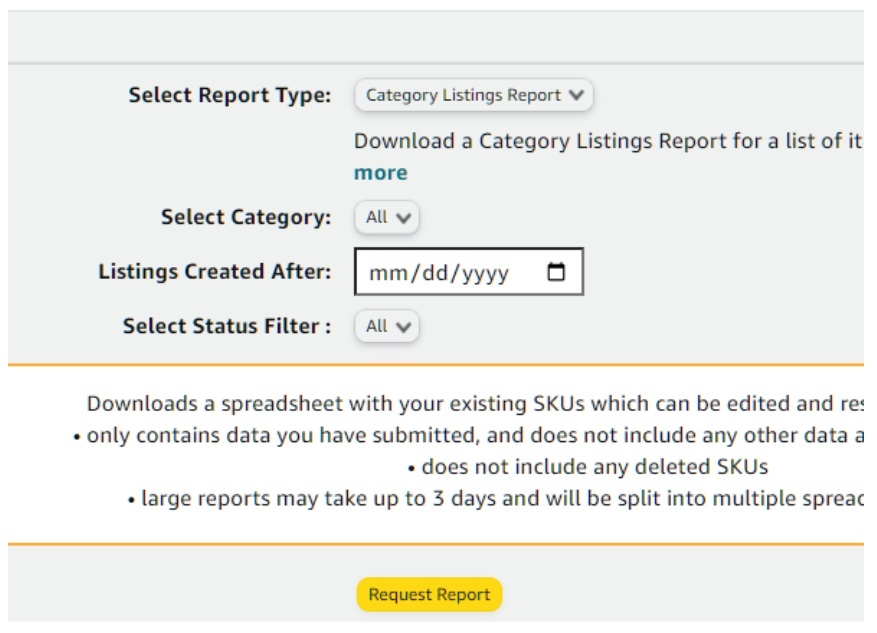

What If You Don't See the Category Listings Report Option?
Don't worry if you can't find the Category Listings Report in your dropdown menu – this is a common issue that's easily resolved. Here's what you need to do:
- Go to the Help section in Seller Central
- Select "Get help and resources"
- Scroll to the bottom and click "My issue is not listed"
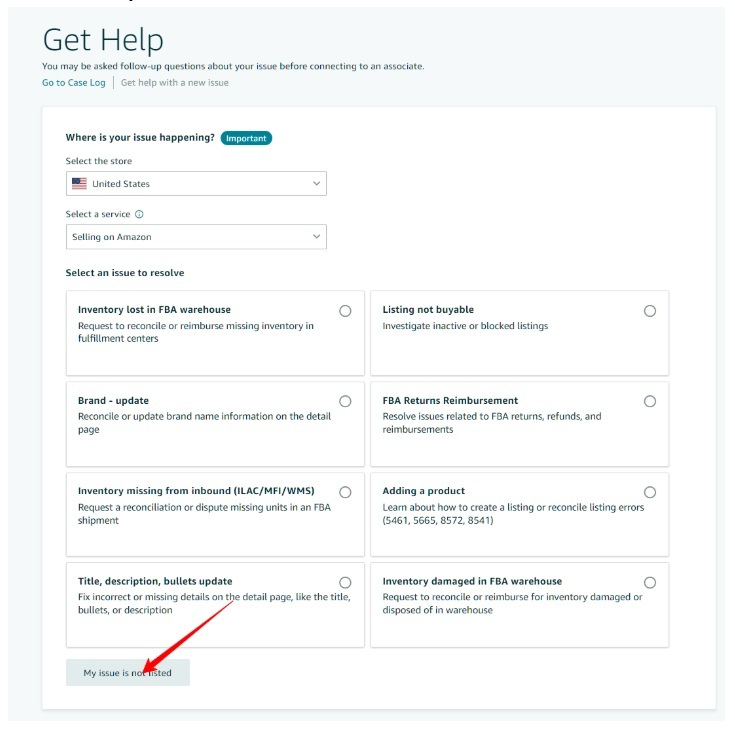
4. In the Description box, simply request the activation of the Category Listings Report

5. Follow the prompts: Click "Continue," then "My issue is not listed" again, followed by "Product or Listing"
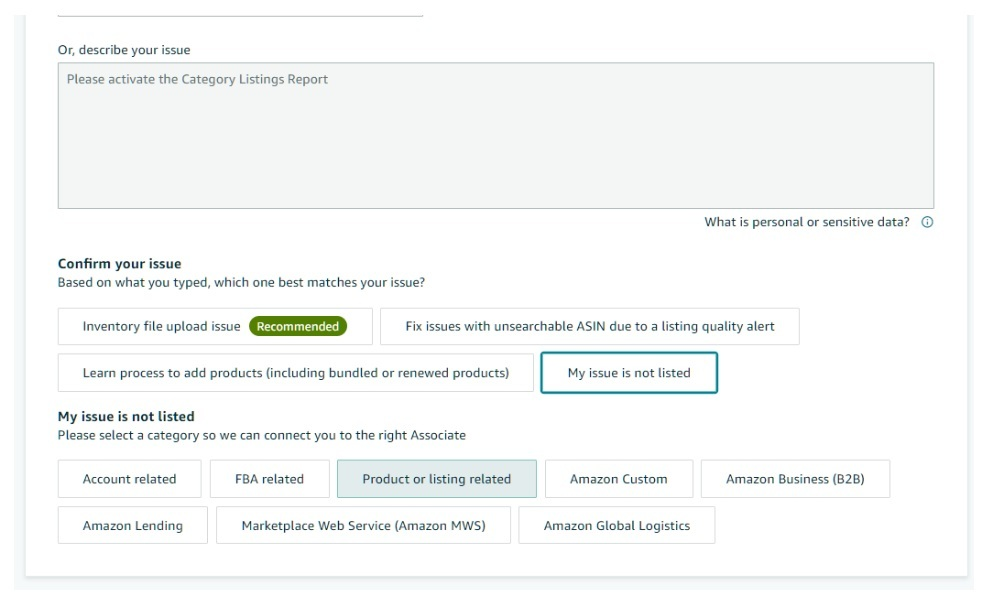
6. Choose email as your preferred contact method and send your request
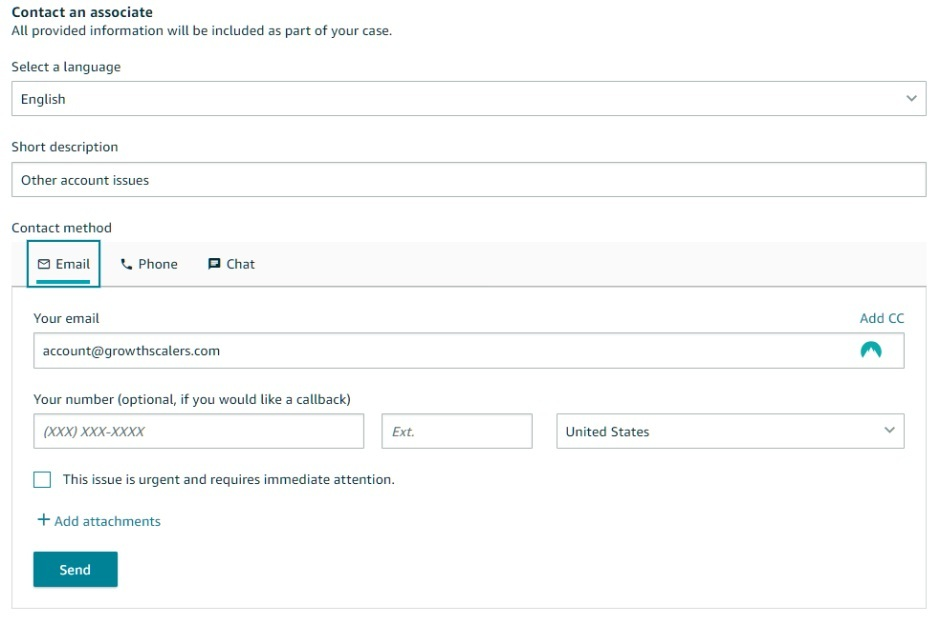
Amazon typically processes these requests within 24 hours, after which you should see the Category Listings Report option in your reports dropdown menu.
Organizing Your Category Listing Report
Once you've downloaded your report, you'll notice it's quite extensive and might seem overwhelming at first. Here's how to organize it effectively:
Quick Sort Method
To make your data more manageable:
- Click on Cell A2 in your spreadsheet
- Press Ctrl + Shift + Arrow Down to select all data in that column
- While holding Ctrl + Shift, press Arrow Right to select the entire dataset
- Click on the Filter option in your spreadsheet
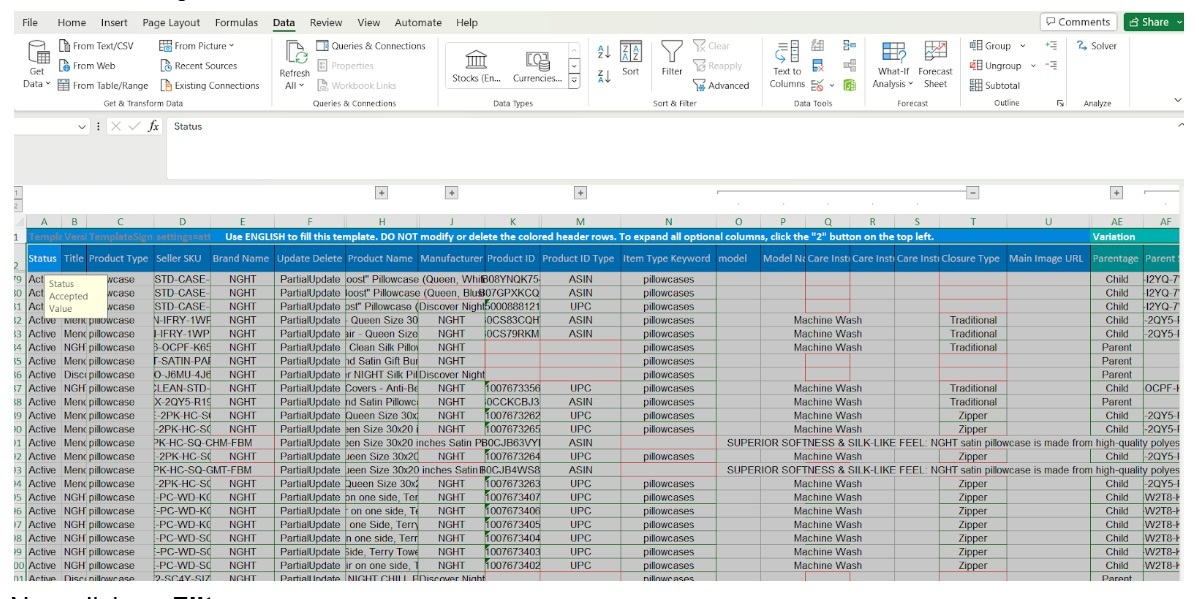
Now you have a filtered view of your entire catalog that you can sort by any column, making it much easier to analyze specific aspects of your listings.
Advanced Organization Tips
For more complex management needs, consider creating different views of your data:
- Sort by Parent SKU to group all variations together
- Filter by Seller SKU to focus on specific products
- Use the filtered view to identify missing information or inconsistencies across listings

Final Step: Ungrouping Columns
To ensure you have full access to all your data:
- Select all cells using Ctrl+A
- Press Alt, then A (to access the Data tab)
- Press J to ungroup all columns
This final step ensures you can view and edit all aspects of your listings without any hidden or grouped data getting in the way.
Before You Dive In...
Here are some golden nuggets of wisdom:
- Always, ALWAYS save a backup (future you will thank me later!)
- Use Excel's freeze panes feature (trust me, it's a game-changer)
- Create templates for stuff you do often
- Make downloading reports a regular habit (like your morning coffee)
Need a Hand?
Hey, we at Growth Scalers know this Amazon selling business can get pretty complex. If you're feeling overwhelmed or just want to make sure you're making the most of these reports, we're here to help! We've helped sellers turn their Amazon catalog management from chaos to clockwork.
Remember, mastering your Category Listing Reports isn't just about learning a new tool - it's about transforming how you run your Amazon business. Ready to take control of your catalog? Let's do this! Contact us now!




